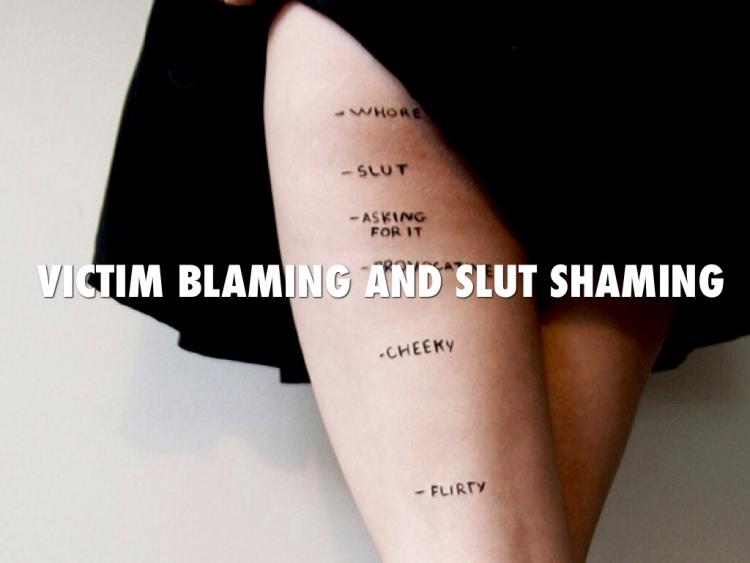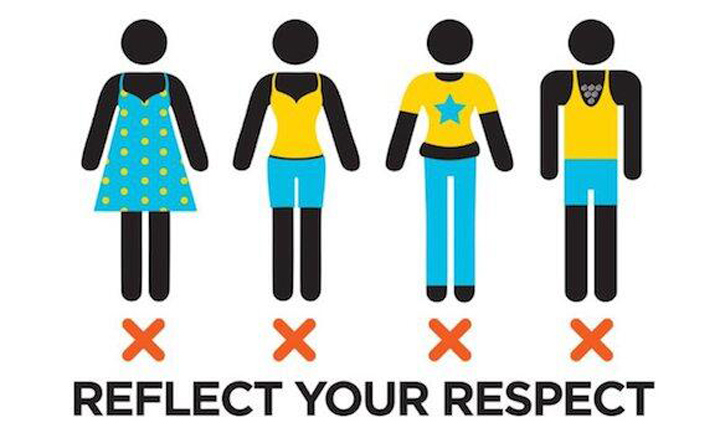The Double Standard of High School Dress Code

In grade school and high school in Canada and the United States, dress codes are implemented to prevent students from wearing inappropriate or objectionable images. However, these rules often go beyond benefitting the community and unfairly hold strict stipulations for what girls can wear, and are not so strict about what boys should wear.
While it is important that young, curious students are not arriving to school dressed more maturely than their age (yes, for boys and girls) it is important to pay attention to the sexism against girls within these dress code policies. These policies inherently tell girls to “cover up” when they dress for school so that they do not “distract” their male classmates. If wearing a shirt with spaghetti straps, a skirt that comes right above the knee, or yoga pants that the school considers “too tight” because it might distract the boys in the class from paying attention, are we really teaching today’s youth the right kind of lesson?
School dress codes should have the same rules for both boys and girls. (Photo: East Side News)Telling girls to cover up so that they don’t distract boys is the exact same thing as telling a woman not to wear a little black dress when she goes to a bar at night so that she doesn’t get raped. This kind of behaviour has perpetuated modern feminist movements protesting rape culture as seen with Still Not Asking for It. The campaign, which advocates that women are never responsible for being raped, shouldn't need to exist but is unfortunately increasingly necessary. We constantly teach women and girls that they need to censor themselves instead of teaching boys simple things like, "No means no," and that rape is always wrong. Arguing that a certain amount of female skin exposure distracts boys only teaches them these principles from adolescence onward, and as they get older, that nothing is their fault if the way a woman dresses gives off a specific message. It is a ridiculous, undermining, and sexist argument.
The more effective action for these institutions, it seems, would be to mold these young minds by teaching the male populations self-control; that girls and women are not simply "objects" to have and that girls and women deserve the same rules and respect that boys and men do. And, on the other hand, it seems almost insulting that schools instantly assume that boys lack self-control and pay more attention to a bra strap showing instead of what their teacher is teaching.
Schools should spend less time monitoring clothes and more time educating (Photo: A Dramatic Opinion)This kind of behaviour conditions children and teens in a dangerous way as they grow up. Educational institutions, especially those that do not require wearing a uniform, should remember that they are raising human beings, not animals. Oftentimes, girls are taken out of school and told to go home and change, or are even subjected to detention or suspension for their choice of clothing. In some cases, as featured in The Independent, some girls have even been sent home for showing as little as their collarbones. Additionally, as Time reported, there are cases where girls have been taken out of class and further put into detention for wearing a pair of shorts, while a fellow male classmate on the same day wore an incredibly offensive, sexist, and derogatory shirt and no action was taken against him.
If this doesn't demonstrate sexism within dress codes, I don’t know what does.
However, I am not arguing that schools shouldn’t have dress codes. I absolutely believe that they should. However, if a dress code is going to take place, it should not be sexist. For example, if a girl isn’t allowed to wear a spaghetti strap, then a boy shouldn’t be able to wear a tank top to school either. If a girl isn’t allowed to wear yoga pants because they are too tight, then a boy shouldn’t be able to wear a spandex t-shirt. If a boy is caught looking at a girl for wearing spaghetti straps, maybe the boy should be sent home for not paying attention in class. This double standard in dress codes enforces sexist behavior and conditions students to blindlessly adopt this stance as they grow up -- and this double standard is sending these young minds down a particularly dangerous road.









